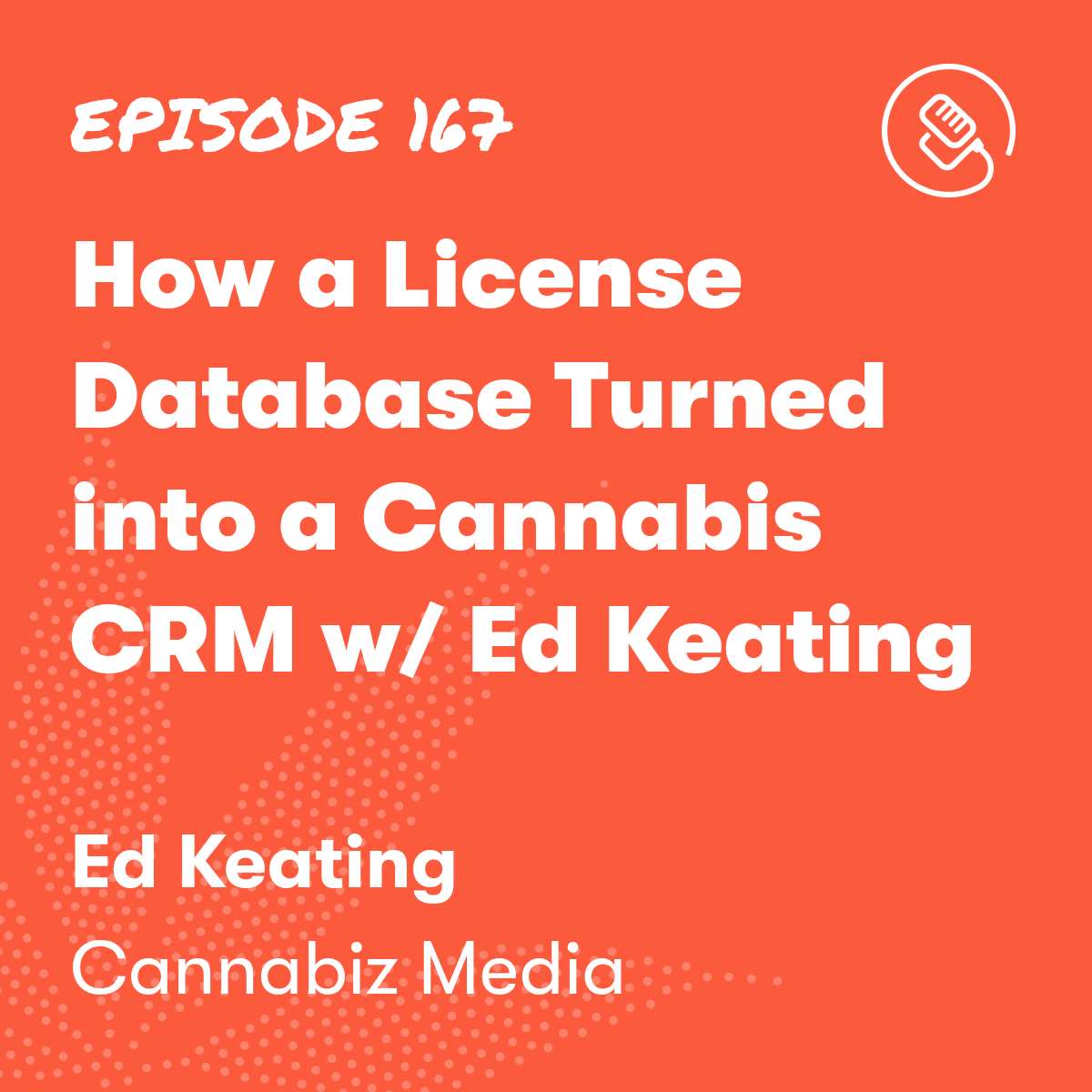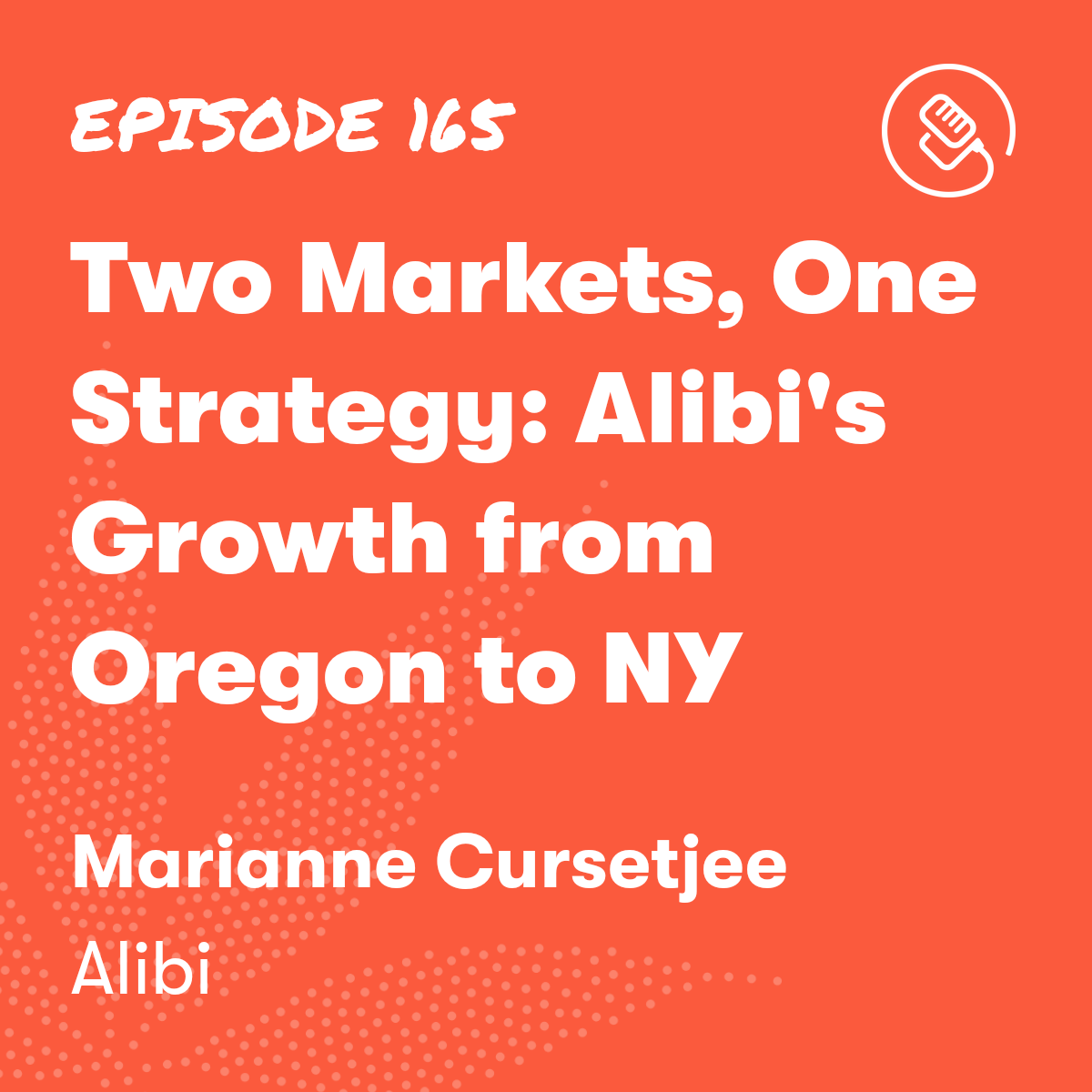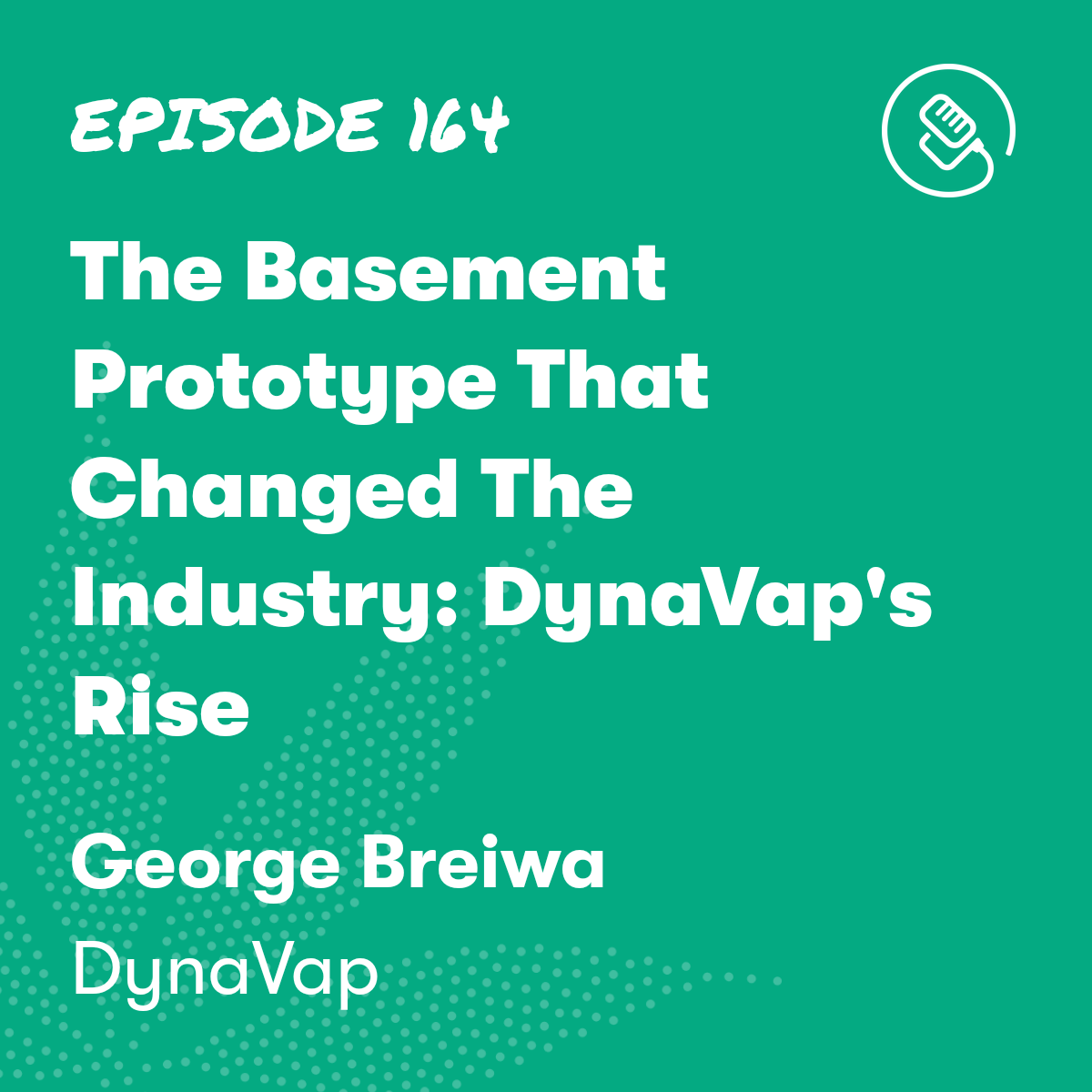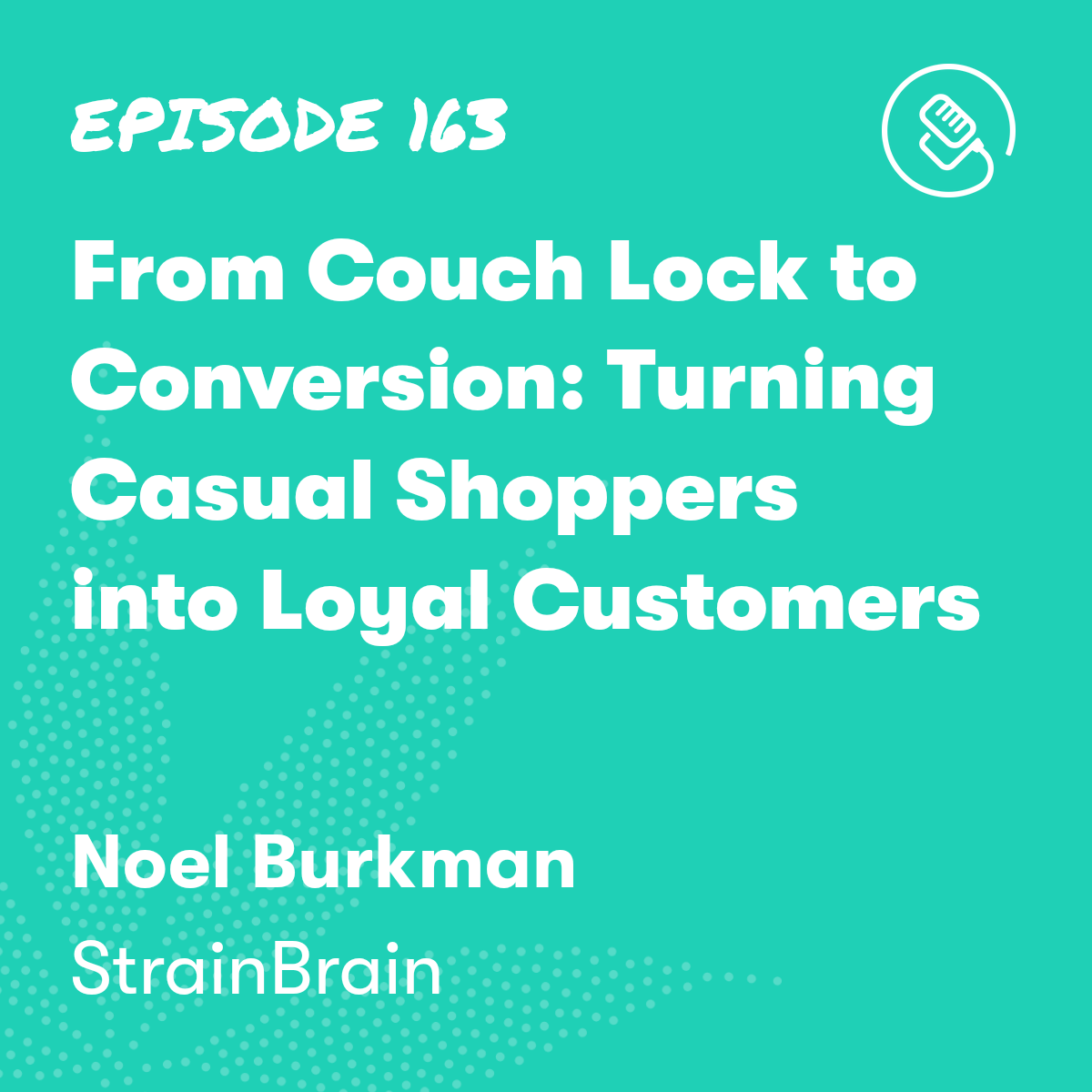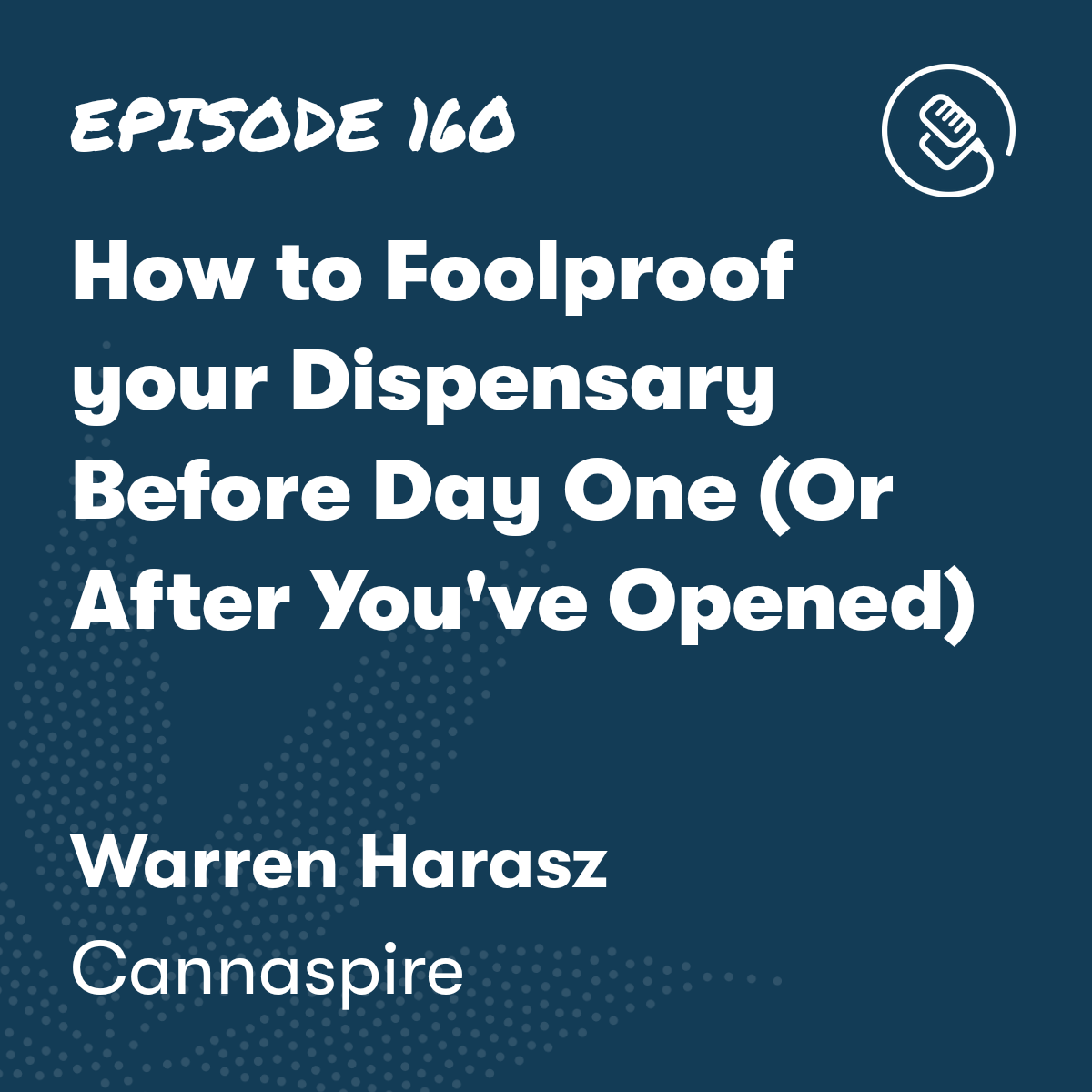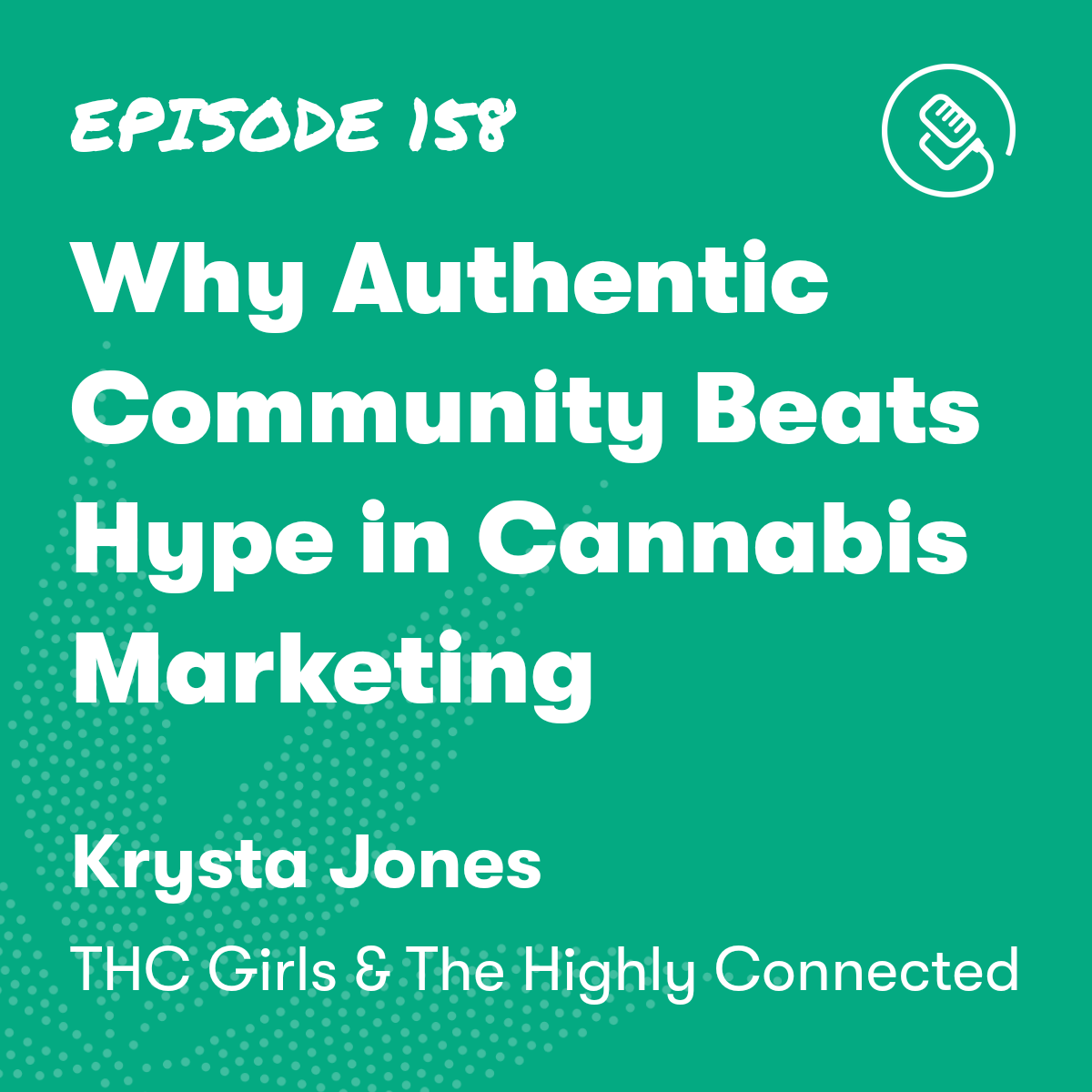

The Ultimate Blueprint for Designing Your Cannabis Facility
Episode Description

Episode Transcript
Margit Whitlock: Your best customer is your repeat customer, right? Your least expensive customer is your repeat customer.
So honestly, your reputation and how you present is very important to your repeat business and referral business. So that's where you wanna go.
Tom Mulhern: Welcome back to the Kaya Cast Podcast. I am your host, Tom Mulhern, and for today's show, I have a conversation with Margit Whitlock, who is the CEO and founder of Architectural Concepts out of San Diego. And I. Little pause here. I lived in San Diego and it is the most beautiful place in the world, I think to live because it's perfect temperature year round.
And Margit is an architect. She is working to build spaces in the cannabis industry that are accessible, that are beautiful. And she has a history in the hospitality industry with hotels and timeshares, and she really brings that experience, of creating spaces that people want to go to, want to relax and want to, you know, build a whole vacation around into her design and her business at Architectural Concepts.
And so we talked about. A whole bunch of different topics, including the steps that are involved in building your construction plan. We talked about the future of the industry when it comes to some of these consumption lounges and even, you know, cannabis infused experiences, health and wellness retreats and Margit really had me excited for the future of the industry when it comes to these experiential Activities that could be paired with cannabis.
So I hope you enjoy this conversation with Margit. Whitlock, CEO and Founder of Architectural Concepts
Tom Mulhern: Margit Whitlock is an AIA licensed architect and the CEO of Architectural Concepts, an interior design and architecture firm, specializing in cannabis related projects. With over 25 years of experience in the industry, Margit has been at the forefront of designing and building dispensaries, grow rooms and extraction labs.
As an expert in the cannabis industry, she has been featured in numerous podcasts and publications to discuss her work and to offer solutions to the industry's unique challenges. Margit is passionate about creating safe and responsible spaces for cannabis businesses to thrive. She has a unique insights into the industry and is a great resource for anyone interested in breaking into the cannabis business.
So Margit, welcome to the Kayak Cast podcast. It's so wonderful to have you on the show here. I love talking to architects cuz I think you guys have such an interesting part of the whole dispensary process. So welcome to the show.
Margit Whitlock: Thank you so much for that. Really appreciate the opportunity to speak with you today.
Tom Mulhern: Well, can you tell me a bit about your background and how did you get involved in cannabis?
Margit Whitlock: It's a long journey. So, we started Architectural concepts in 1992, so we're actually 31 years old, and we'll stick with that for a while. And we started in the hospitality arena. So for many, many years we did architecture and then we added interior design to our services cuz our clients were really wanting a full service package, something more integrated as opposed to, you know, trying to find an architect and find a designer and, and go through what usually is kind of a finger pointing situation between disciplines.
And when the cannabis industry became legalized it was an attorney friend of mine that asked me to help them, help her clients with getting entitlements.
So part of an architect's job, it no matter what kind of project, Is processing entitlements. And those are what people are familiar with are called conditional use permits. It's kind of a pre-planning approval to the project prior to actually full working drawings in construction.
In the cannabis industry. It's required for a specific location. It evaluates the ownership, the operations manual. It evaluates the site. Make sure it's cleared away from, it's either 600 or a thousand feet from sensitive uses. Depending on whether it's a cultivation or if it's a manufacturing, there be might be noise and smell issues.
There's water usage and energy, energy usage issues.
And then at all of the other operational and background checks and that whole application, so large package that's not just related to architecture. And so we produced about eight of those over the number of years for manufacturing, cultivation and dispensaries. And for me, the passion is to really get into the interior part of it because you know, kind of a hospitality retail is our, is our niche.
And so that's really what kind of drives me. Just we have to start the beginning, but the end result is to get it into the design of the space itself. So from a space planning, interior design, Furniture fixtures, lighting, signage, branding, all of that, that package that happens, you know, once we get into working drawings.
Tom Mulhern: Can you talk a bit of the process of construction and design development and, you know, even getting construction documents and permits and all of that that's involved in that initial architectural.
Margit Whitlock: The process of construction is, is daunting for people who've never been through it before. So you really have to be holding their hand, you know, and, and letting them know how does this work? So this is how it works. A client will come to us and say, okay, I've got a 3000 square foot tenant space.
And I'm looking at renting it. So before you even sign a letter of intent, you need to do some due diligence on that property, whether it's a cannabis property or not. There's due diligence on the
that you're looking at first to make sure that they fit. And we call it something it's called a test fit. So say a client will come to me. So I'm looking at this property and this property and this property.
I have a program. It's a dispensary. Let's say, you know, I need a reception, I need security, I need display. I need my business office, I need my employee room, my bathroom need something else. Right? And that's a 3000 square foot, thereabouts. But maybe the space that they're looking at, his long and skinny, or they're looking at one that's, Wide and thin, or maybe it's a multiple spaces and they actually are not very congruent, right?
So you have to take a look at the space, do a test fit. Does your program fit this building? What are the mechanical systems? What are the electrical systems? Do we have to move any structural walls? Do we have to upgrade anything? What's the landlord gonna give you in what's called an exhibit A, which is typically a, a document that the landlord describes if they're going to help you with tenant improvements, if they're going to give you free rent for six months while you get a permit.
I mean, there's a lot to getting a lease negotiation done, and I've, I've seen it happen where people get so excited about a space that they go and sign a letter of intent. They get themselves into a lease. And then the space doesn't fit well for them, or we have to do a lot to it to make it work for their program.
And I'm thinking, why would you do that? So number one, due diligence before you sign a lease work with your broker as much as possible to get as much free rent as possible, depending on the terms of the agreement.
Then the next step if it's a cannabis facility, then we have a conditional use permit to apply for.
They take anywhere from six to eight, nine months. And so you're sitting holding rent on a piece of property for nine months. There's the biggest barrier to entry there is with the laws, the way they're written now. Now it's not required by the state to have a space located and secured. Different jurisdictions have put that burden on, and now they're starting to take that burden off.
So once you have your license to go, then you can go search out the right space and get in commitment and start doling out that money. Cuz landlords have been very greedy there, but might be a $2 square foot space is now four. 4, 5, 4, 6, or combination of your profit.
I mean, they've really coming down hard on in the finances. So, so say we get our CUP and we have our program and we're ready to go, and the next step would be more of a schematic design phase to bring on the various consultants needed and to get to what we call maybe a 20% complete construction document set.
This is just the first phase, so we have schematic design. Then design development takes you to about 50% and by the time you're 50% done with your construction documents, you should have a very good idea of your overall budget. And if you need to pair back what's called value engineering, then we can pair back on things.
If we're good with the budget, then we go into construction documents. And specifications. And then everybody engineering say if there's structural, mechanical, electrical, and plumbing involved, architecture, interior design, civil, if we have site issues, landscape, if we have, you know, have to redo the landscaping.
So you have all these consultants to coordinate, which is usually my job.
And then we get into, then we get into what's called plan check.
While you're in plan, check. That's when you put your project out to bid. But do not sign your bid contract until you have all of your corrections from the city. Cuz you don't wanna get hit with a change order for something that might be coming up at the very last minute.
Like, oh, you have to upgrade the water meter. Oh, the fire department doesn't like your standpipes. Like, and those are like the things that always happen at the end. I don't know why, but they always happen at the end. So, if you don't have a design build contractor on board already, then you're gonna put it out to bid.
Typically three bids, three contractors. Don't always take that low bid. You know, you really need to have a, a bid form. So you're comparing apples to apples, not apples to oranges, and people write bids differently, so they're really hard to compare, right?
So you can see how all of those weeks add up. They add up to a lot. A lot. It doesn't happen overnight. So if you're six months for C U P and you're 2, 3, 4 months maybe for design, you know, the three, four months for permitting, then you got six months of, you're still holding on and paying rent on that property, right?
Unless you can negotiate with the landlord on trying to, you know, get that rent extended until plan check is either completed and you have a permit or construction is completed, you know, then you're ready to move in with the certificate of occupancy. Just consider how long all that takes, how many players are on the, in the game, and how much money is being spent in order for you just to open.
And that doesn't include your product, your branding and marketing, your staffing, your product. nothing opens up for less than a million dollars, so nothing.
and Is this all in that initial licensing application time? Because you, you work with cannabis license applicants, right? So this, is this before their license is approved or is this They get their license?
Yeah, they get their license at the conditional use permit stage. Now that's the local jurisdiction. They still have to apply to the state and there's a whole process for that as well. To apply to the state they're really looking for a premise diagram and that's this very specific one page premise diagram that shows this is the site, here's my little building.
Here are all of my security cameras. You know, what are inside and outside. So they're not looking for a full architectural package at the state licensing application. But you can't get it until you get your local jurisdiction approvals, right? You can keep working on your drawings and get to plan check while your state license is being processed.
But we haven't had any problem with getting, you know, people processed at the state level while we're working on all the other drawings that need to go in for construction.
Tom Mulhern: Well, now you guys are unique because you are also, you do the interior design as well. Not a lot of architectural firms do that. You have to find another consultant, and it sounds like you've already got a long list of consultants. So what is important to kind of keep in mind when it comes to the design of your store maybe even some of the procurement of those furniture and fixtures?
Like what, what does a business owner need to keep in mind when they're working with you designing the, the store?
Margit Whitlock: So I think from an interior design standpoint, it's all about the vibe, and your demographics. So who are we targeting? How are we targeting them? So I really like working with my clients on their branding and marketing packages. It's important for me to understand what their vibe is so that we can design to it.
So what is the message? Are you a sustainable green? You know, is this really cozy and fluffy and we have a different, you know, or is this kind of hardcore? Let's get in and get some weed and a couple of bongs and out, What are we delivering? So that's a big conversation and it, and it has to align with the brand because now they're gonna go out and they're gonna sell their brand.
They're gonna go market it, and we've gotta be able to deliver on the brand promise, right?
And so we start there. We start, what is the brand? What are we delivering? How are we gonna deliver it?
And then we gotta get into budget. Do you need bells and whistles or are we gonna do this on a dime? Which is possible, right?
You just need to be smart. And then we have to look at the product you're gonna sell. So brand, one. Two merchandising program. So what are we, what are we merchandising and how are we going to merchandise it? Is it in display cases? if it's bud, is it in smell boxes?
Is it all on the wall? Is it all behind the counter? Do you come in when you do it all on an iPad and it gets packaged up in a, in a bag for you? Or do you get to roam around like it's the Clinique counter at Macy's and G and somebody's, you know, tending to you? that takes up different kinds of space and it takes up different kinds of circulation.
And then I think the one thing all clients need to spend a little more money on is great lighting.
Merchandise lighting is very important. So you have a color rendition in lighting, you have all different ways of spotlighting, under lighting, over lighting. Are there moods to create within the space? That's the whole conversation. So lighting is super important. I mean, you could have a concrete floor in concrete walls in the most fantastic lighting, and you will be off the charts because that's what's, you know, people visually come into a space and they, they resonate with that. Right.
Let's see what else? Oh, and furniture. You know, is there a place to hang or not? You know, do you, you wanna be able to have maybe a multipurpose room that you do cannabis instruction and education?
Maybe there's a yoga room that, you know, maybe there's something that you have extra space that came with a the location that you rented and you thought, what do I do with this space? Well, there's a lot of things you can do with that space. You know, you could have classes, you could have art classes, you could have all kinds of things.
And I, and I saw that also in another dispensary where they had a third floor that wasn't being utilized. And so they do have yoga classes on some days. They have art painting on some days. They have community kind of a community engagement events. Right. So educational events, they have senior events, they have, I know they had a whole set of programming where they were utilizing that space to monetize it as well, and also to bring people in so that they're attracting a, maybe a different base with these activity rooms that get people to maybe be curious, you know, they canna curios people.
Then they're kind of curious and maybe they'll go through the dispensary. Once they feel comfortable with who you are and what you represent. I mean, it's, it's a whole thing. It's all in here, right? It's a whole thing.
Tom Mulhern: Like have you seen really good design impacting in more sales, more business?
Margit Whitlock: Your best customer is your repeat customer, right? Your least expensive customer is your repeat customer.
So honestly, your reputation and how you present is very important to your repeat business and referral business. So that's where you wanna go. So design drives that, not just, not just design. Obviously you have to have awesome staff, customer service, awesome staff. So happy staff need to work in a nice place.
Otherwise they're not happy staff. Right? So you have to have spaces for them too. It's not always about the customer. And I think a lot of businesses, and I see this in hospitality a lot, you go into the employee lunchroom and you look like you just went into like the dog kennel, left the pound. I mean, it's just nasty, smells bad, looks bad.
This why, this is how you treat your employees. So think about that. So we have to have happy customers and, and happy clients. And and I think design drives a lot of that too, you know?
Tom Mulhern: How different is your design process in the cannabis industry as opposed to other industries you've worked in, and what are some of the unique challenges you face when designing specifically for a cannabis dispensary or cultivation operation?
Margit Whitlock: You know, I don't think my design process is that much different. We have a very rigid process of phases and approvals and budgets, and I wanna keep everybody on track. I get to be kind of a little bit of control freak. I wanna make sure we're all on track, we're all on the same page.
There are no heartbreaks at the end of this journey together, right? Communicate, communicate, communicate. I think the only difference is the product. So many things are changing. So many things are coming about what's hot and new? Do we have to have a space that rotates every other week with a new vendor?
And what does that look like? And I think that's probably where my customers are finding challenges, is in, there's always something new to display or present. And how do you do that? And how do you make the space flexible enough for that too, right?
Can you talk about any exciting new trends or projects that you kind of see happening in the cannabis industry when it comes to architectural design, like some new trends that you're spotting that are kind of a, a unique cool thing that's happening.
As far as innovation and trends, it's the lounge, it's the evolution of this business is now going into the lounges. Let's, you know, jurisdictions are experimenting with that.
That space, I think is not like your typical bar or tavern. I think it's more ancillary and social. It's not like just throw a bunch of tables and chairs and, you know, beer hall.
So the, so that evolution of into the lounge space uh, I think slowly they'll get into the food and beverage space, right. We're seeing pop-ups, like I said before, we're seeing pop-up events highlighting food and beverage and kinda like canna fairs where people can try things.
I think we'll see retreats probably in more of the cannabis medical space, so the people will be going for retreats and health and wellness. And so I think that we'll see a whole health and wellness trend and that will probably stick for sure.
I love that idea though, of kind of like a personal retreat and bringing the cannabis element into it for health and wellness or, you know, it could be it could be any, any number of reasons that you'd wanna incorporate cannabis with a health and wellness retreat? I, I think, and, you know, pairing meditation or whatever, having those experiences would be amazing.
The yoga, the meditation, the walks, art expression. You know, cannabis allows us to be very expressive and very creative and very rethinking and flowing right? And I think that that aspect will be captured in some of these you know, future, future endeavors, let's say.
Tom Mulhern: One last question. As a business owner, what is one tip that you would have for dispensary owners to kind of launch, scale or grow their businesses?
Margit Whitlock: Pick the right team. Vet out who you are playing in the sandbox with. And I think that goes for every business, but you know, there's quite a lot of shadiness that's going on and around the edges, right?
So pick the right team. Create a loyal, a loyal group of people who are invested in you, and you're invested in them, and your business will grow, right? Because it is about empowerment, investment, and that security to know that everybody's got each other's back. So pick the right team, and that's all the way from your, even from the architect to the contractor, to your banker if you have one, or who's lending you the money to your staff manager, to your, your suppliers.
Tom Mulhern: Well, Margit, how can people connect with you and, and architectural concepts and, and what you guys are doing. How can people find out more about you?
Margit Whitlock: send me an email. You can pick up the phone and call we'll be happy to chat for whatever reason, you know, like even if you just have a question I get a lot of questions actually, and I'm happy to, I'm happy to help.
Tom Mulhern: Margit, thank you so much for being on the sh the show. We'll have all of the links to your email and everything in the bio, so if people wanna reach out to you.
But thanks for taking this time to talk to us and share your experience.
Margit Whitlock: I'm happy to, and I really appreciate the opportunity.
Tom Mulhern: Now I'm gonna be the first person to book my health and wellness retreat with an infused cannabis experience because I have found that cannabis has made such an impact in my life when it comes to sleep, when it comes to mental health, when it comes to just relaxing. And so pairing that with, you know, other people and meditation, it sounds amazing.
So there's a million dollar idea out there that we just shared that you can take and run with. And like Margit said, most cannabis operations take about a million dollars to get started. So there you go. It's a million dollar idea that'll only cost you a million dollars. But I really appreciate Margit's insights into interior design, into getting the biggest bang for your buck when it comes to designing, having great lighting.
So thanks again, Margit, for being on the show.
And if you're new to the podcast, I want to encourage you to subscribe to our podcast because we have great conversations like this every single week. And you know, from people in the accounting fields to actual dispensary owners, to architects like Margit. We are here bringing these interviews to you because we want see you grow and succeed in your cannabis business.
So, subscribe, share, follow us on social media, and we can't wait to share more conversations like this about how to launch, grow, and scale your cannabis operation.


